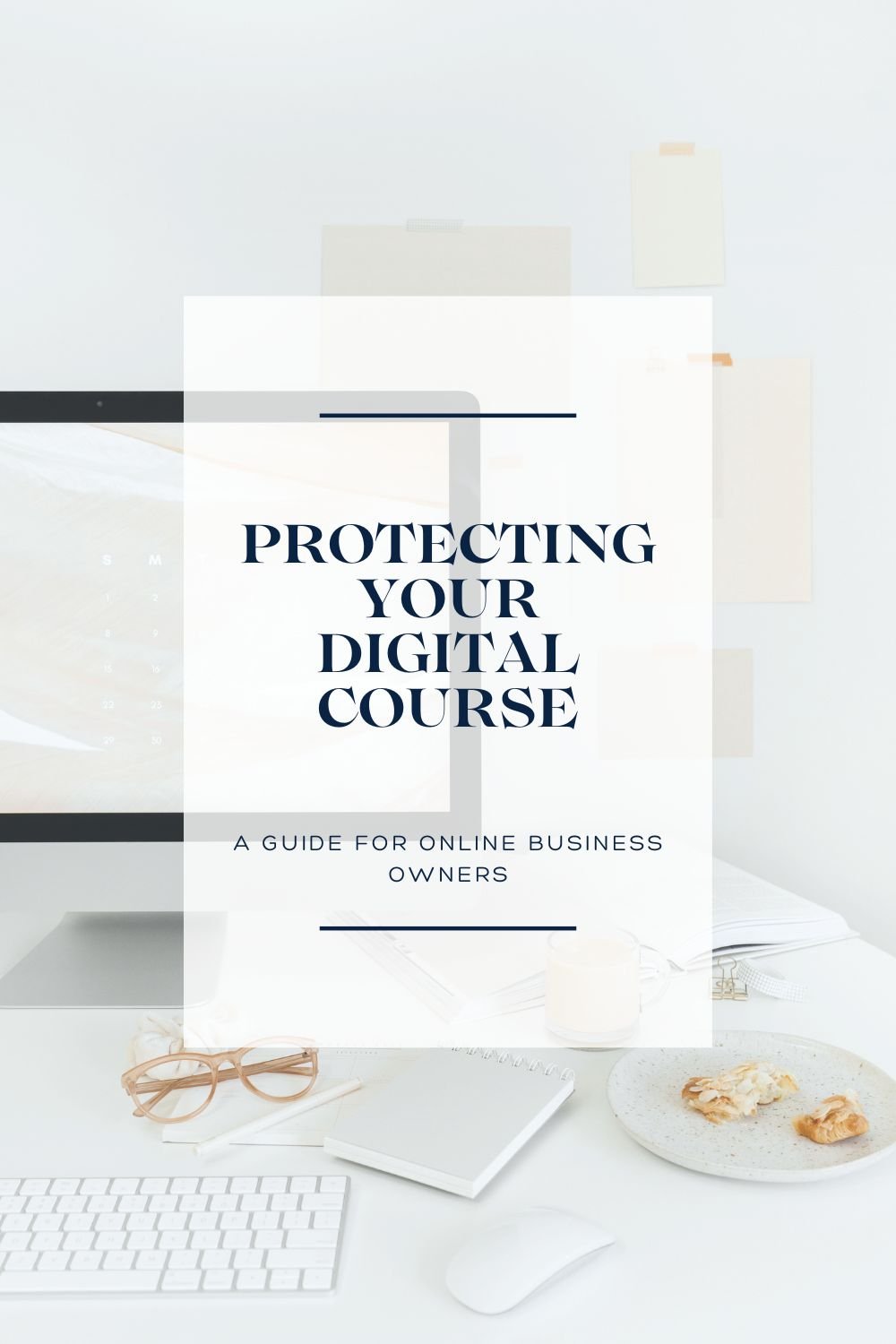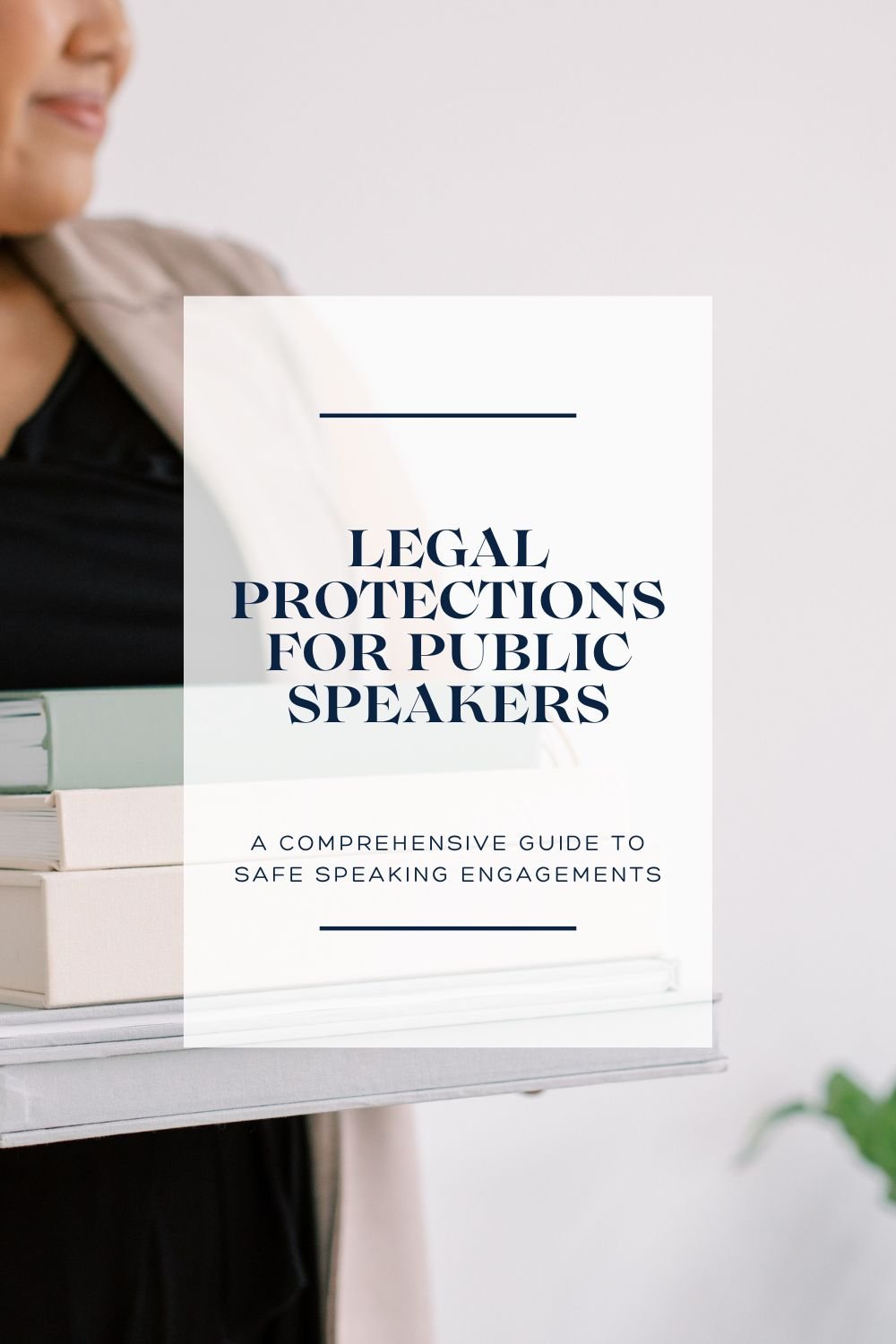Protecting Your Digital Course: A Guide for Online Business Owners
Hi there, dreamers & dynamos,
Welcome to Digital Courses 101.
For many service providers, a digital course is akin to a golden egg. Unlike conventional offerings, this unique asset can be purchased around the clock. The allure? Passive income and the opportunity to serve a much larger audience. But with these advantages comes the need for meticulous protection because it is much more difficult to pre-qualify clients for a successful working relationship when they can click “buy” at any time.
Let's delve into the essential tools and strategies to safeguard your digital course.
Understanding the Value of a Digital Course
First things, first. Let’s get on the same page about digital courses. A digital course isn't just about disseminating information; it's an avenue for expertise and a means to impact lives beyond geographical boundaries. Its 24/7 accessibility might reduce one-on-one client interactions, but it compensates by offering scalability and a consistent revenue stream.
For many entrepreneurs, passive income is the dream. The versatility is nearly endless. A course can be designed to run entirely passively or to be a hybrid offering live engagement. Likewise, it can be designed to be comprehensive and lengthy with a commensurate price tag or be more of a quick win with a lower price point.
The Role of a Terms of Use Agreement
At the core of protecting your digital course is a robust Terms of Use agreement. This document isn't just legal jargon—it's your shield.
Here’s a quick version of the essentials but check out my article: Legally Protect Your Online Course for a deep dive into Terms of Use.
What should it cover?
Interaction Protocols: How can customers access and engage with your course?
Content Clarity: Clearly list the materials, any bonuses, and exclusions.
Platform Details: Which platforms will host the content? Are social media groups included?
Behavioral Expectations: What conduct is acceptable? Can members be removed?
Access Boundaries: Under what circumstances can access be revoked? Can it be restored? How?
Content Sharing Rules: Can users share course content? If yes, how?
Payment Modalities: Ensure payment details, including missed payment or late payment policies are explicitly stated.
Intellectual Property: The course content is your brainchild. Protect it and include language about who owns what material and what type of license you are extending to your customers.
Importantly, it's vital to position the Terms of Use agreement at checkout, before payment details are inputted, ensuring customers consciously agree to the terms by clicking a check box.
It is also wise to include a copy of the Terms of Use within the course platform and to email a locked PDF attachment to customers with their order confirmation.
Now, that your course content is protected, there are several key steps to protect your business more broadly.
The Importance of a Website Disclaimer
Just like your primary business website, the site or platform housing your course content needs a disclaimer. This document explicitly communicates what you're offering and what you're not. For instance, while you may provide educational content, you're not doling out legal, health, financial, or religious services. By defining these boundaries, you significantly limit your liability.
Website Terms & Conditions: Why You Need Them
Beyond the course content lies the broader digital territory of your hosting website or platform. The Website Terms & Conditions serves as a beacon, guiding visitor behavior and safeguarding all website content. While your Course Terms focus on the course, this document ensures every piece of information on your hosting site—from blogs to infographics—is shielded from misuse, theft, or bad behavior.
Navigating Website Privacy and GDPR
Every website needs a privacy policy, not just as a trust signal but as a legal requirement. With regulations like the General Data Protection Regulation (GDPR) in play, transparency about data collection and use is paramount. Whether it's email addresses or payment details, users have a right to know how their data will be utilized. Ensuring compliance isn't just about legal safety—it's about establishing trust. You probably have a Privacy Policy on your main website but you will also need one for the course hosting platform or website to remain in compliance with the GDPR and US consumer privacy laws.
The Mini-Disclaimer: Your Course's Silent Protector
Imagine this: A user prints a worksheet from your course and shares it with a friend. Without context, misinterpretation is possible, and this could boomerang as criticism or liability. Enter the Mini-Disclaimer. Placed on all printable or downloadable materials, it briefly states the context and purpose of the document, safeguarding against misuse, and asserts intellectual property rights to ensure it’s clear to all users.
Crafting a digital course requires effort, expertise, and passion. As creators, while we're eager to share knowledge, but it's crucial to ensure our content is consumed responsibly and that our hard work is properly protected. From payment policies to intellectual property rights, every detail matters. By implementing these protective measures, we don't just shield our content—we preserve its integrity and value - that’s protecting your investment. For every online business owner, these tools aren't just legal formalities; they're the fortresses protecting our digital empire. So, as you chart the course of your digital journey, ensure these protective measures are your steadfast companions.
Harnessing Proactive Protection: The Next Steps
Now that we've laid the foundation, let's move to proactive measures that go beyond mere documentation. These steps fortify your defenses, ensuring your digital course remains pristine.
Regular Updates: Staying Ahead of the Curve
The digital realm is dynamic. Regulations evolve, user behaviors change, and technological advancements surge ahead. As a course creator, periodic reviews of your protective measures are pivotal. Whether it's adjusting to a new GDPR amendment or updating your course content, staying updated ensures you're always in a protective bubble. Put in your calendar for once a quarter and review any changes to make sure you are still in compliance.
Community Guidelines and Moderation
If your digital course includes community features like forums or discussion boards, it's vital to have clear community guidelines. These should be visibly placed and easy to understand right inside the course platform (in addition to being part of your Terms of Use). Moreover, consider active moderation to ensure discussions stay on track and any inappropriate behavior or content misuse is curbed promptly. Extra bonus tip: If you have forums or places for members to publish User Generated Content (UGC), you will want to include specific details about how this intellectual property is owned, how it may be used, and by whom.
Technology to the Rescue
Consider investing in technology that restricts unauthorized sharing or downloading. Digital Rights Management (DRM) tools can prevent content piracy, ensuring only authorized users access your course. These tools range from preventing video downloads, to locking text so it can’t be copied. Furthermore, watermarking videos or PDFs can deter users from sharing without permission, as the content can be traced back to them. This tools can be pricey but for valuable content it might be worth the investment.
Love This Info? Check Out Related Articles:
Feedback Mechanisms
A proactive way to protect and improve your digital course is by establishing open feedback channels. Encourage your users to share any concerns or potential vulnerabilities they might observe. This not only helps in immediate rectification but also fosters trust between you and your clientele.
Educating Your Users
Lastly, while legal documents are essential, simple, clear communication can be just as effective. Periodically remind your users about the importance of respecting intellectual property. Host webinars or workshops focusing on the value of original content. When users understand the effort behind your course, they're less likely to misuse it.
In Conclusion
In the vast expanse of the online world, a digital course stands as a beacon of a creator's expertise, passion, and hard work. As with any valuable asset, it demands protection. While the steps might seem extensive, each one plays a crucial role in ensuring that your intellectual property remains untarnished and properly protected. As the digital realm continues to expand, and the online course industry booms, the importance of these protective measures will only grow.
As an online business owner, it's not just about teaching through your course; it's about learning to shield it effectively. Embrace these protective strategies and let your digital courses work for you and your business.
THIS ARTICLE IS NOT A SUBSTITUTE FOR LEGAL ADVICE AND IS OFFERED FOR INFORMATIONAL PURPOSES ONLY. EVERY SITUATION IS UNIQUE AND YOU SHOULD CONSULT A LOCAL ATTORNEY FOR ADVICE ON YOUR PARTICULAR CIRCUMSTANCES.





Dive deep into US trademark law tailored for small businesses! Learn the differences between trademarks, patents, and copyrights, and why a domain name isn't enough. Explore the intricate process of trademark searches, and ensure your brand stands out and remains protected. Knowledge is power – empower your business journey!